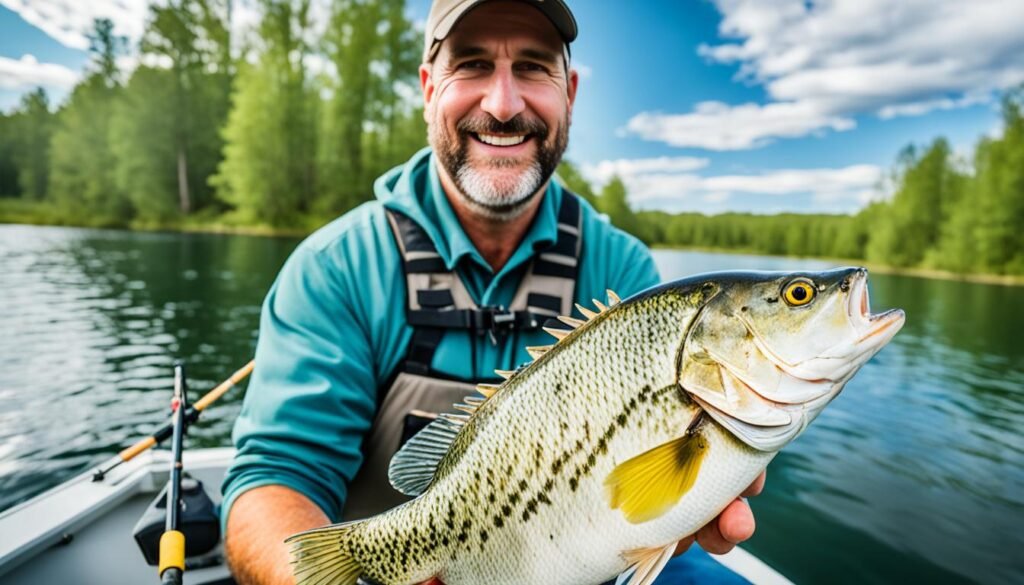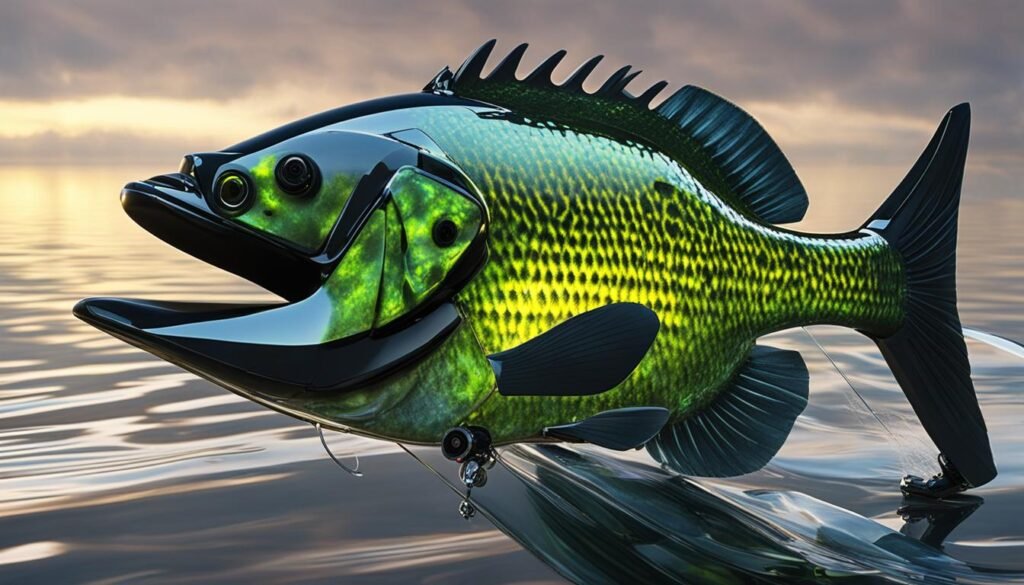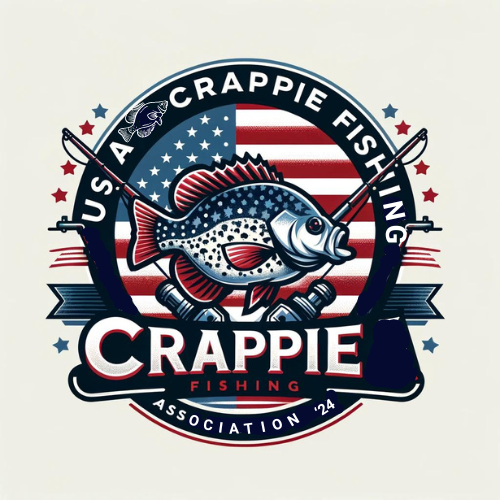Crappie fishing enthusiasts have been buzzing about a particular crappie rig that has gained a notorious reputation for its exceptional performance. This high-performance fishing gear has stirred up a debate within the angling community, with some proclaiming its effectiveness and others raising concerns about its potential impact. Let’s dive into the details and arguments surrounding this controversial fishing rig.
Key Takeaways:
- The effectiveness of a specific crappie rig has sparked a passionate debate among anglers.
- Advocates believe the rig revolutionizes crappie fishing by increasing catch rates.
- Opponents express concerns about the rig’s potential impact on fish populations and fair competition.
- The use of the crappie rig is subject to fishing regulations and specific restrictions in different states.
- The future of the crappie rig remains uncertain, as discussions, regulations, and advancements in fishing gear continue to shape its fate.
The Controversial Crappie Rig
The crappie rig in question has become a topic of intense debate among anglers and fishing enthusiasts. This unique fishing setup combines multiple rigs tied in tandem, resembling an umbrella rig. Many anglers have reported remarkable success using this rig for crappie fishing, citing its exceptional effectiveness in attracting and catching fish.
However, the rig’s outstanding performance has also sparked concerns about its potential impact on the fish population. Some argue that its highly effective nature may lead to overfishing and disruption of natural feeding patterns. As a result, the use of this controversial fishing gear has become a subject of contention and scrutiny.
Despite the ongoing debate, it is important to acknowledge that the crappie rig is a fishing technique that has garnered attention and divided opinions among anglers. The effectiveness of this rig has been a double-edged sword, with its advantages celebrated by those who have experienced increased catch rates, and its potential drawbacks highlighted by those who advocate for the sustainability of fish populations and fair fishing practices.
The controversy surrounding the crappie rig underscores the need for a balanced approach that considers both the effectiveness of fishing techniques and the preservation of fish populations. Anglers and fishing enthusiasts are encouraged to engage in thoughtful discussions and exchanges of ideas to find common ground and explore potential solutions that address the concerns raised by this debated fishing technique.
Advocates for the Crappie Rig
Many passionate anglers have turned into enthusiastic crappie rig advocates, hailing its benefits and touting improved fishing success. They firmly believe that banning this specialized fishing gear would only serve as an unnecessary restriction, denying anglers the opportunity to enhance their fishing experience and achieve greater success.
The crappie rig has brought about a revolution in crappie fishing by significantly increasing the catch rate. Its unique design allows for better bait presentation, attracting more fish and increasing the chances of a fruitful fishing expedition.
“The crappie rig has completely transformed the way I fish for crappie. The improved catch rate I’ve experienced using this rig is nothing short of amazing. It’s like having a secret weapon that fish just can’t resist!” – Tom Anderson, avid angler and crappie rig advocate.
This specialized fishing gear has gained a reputation among anglers for its ability to target and entice crappie with unrivaled effectiveness. The rig’s intricate construction and strategic positioning of bait offer a unique advantage, resulting in a higher success rate.
Beyond the Catch: Additional Benefits of the Crappie Rig
The benefits of the crappie rig extend beyond its improved catch rate. Anglers appreciate the rig’s versatility, allowing them to adapt to various fishing conditions and water depths. Its effectiveness in both shallow and deep waters makes it a reliable choice for anglers seeking consistent success.
Furthermore, the crappie rig’s design promotes precision fishing. Anglers can precisely target specific areas, such as submerged structures or vegetation where crappie are known to congregate. This level of accuracy enhances the overall fishing experience and maximizes the chances of reeling in a prized catch.
The crappie rig’s popularity continues to grow as more anglers recognize its potential to optimize fishing success. Despite the ongoing debate surrounding its use, advocates firmly believe that the crappie rig represents a valuable addition to any angler’s arsenal, enhancing both fishing enjoyment and the satisfaction of landing a bountiful catch.
Concerns About the Crappie Rig
Opponents of the crappie rig have raised valid concerns regarding its potential impact on fish populations and the environment. These concerns become even more significant in areas where fishing pressure is already high, exacerbating the potential risks associated with using this fishing rig.
One of the primary worries expressed by opponents is the possibility of overfishing. The crappie rig’s exceptional effectiveness at attracting and catching fish could lead to an unsustainable harvest rate, depleting the populations of crappie in certain areas.
Furthermore, there are concerns about the disturbance of habitats caused by the use of the rig. With multiple rigs tied in tandem, the rig can cover a larger area in the water, potentially disrupting the natural feeding patterns and behaviors of crappie and other fish species.
Some anglers argue that the crappie rig provides an unfair advantage over traditional fishing methods, which goes against the principles of fair competition. This raises questions about the integrity of fishing tournaments and whether the use of such highly effective, specialized fishing gear undermines fair play.
“The crappie rig’s effectiveness raises concerns about the fair competition between anglers using different fishing methods. It’s essential to ensure a level playing field and maintain the integrity of the sport.”
To better understand the potential impact of the crappie rig, it is crucial to evaluate its environmental implications and the need for fair competition in fishing tournaments.
Regulations and Restrictions
The use of the crappie rig is subject to fishing regulations and specific restrictions in different states. These regulations aim to ensure the sustainable management of crappie populations and maintain a balance between angler interests and conservation efforts. Anglers must familiarize themselves with the applicable rules and follow ethical practices while engaging in crappie fishing.
Crappie Fishing Regulations
Each state has its own set of crappie fishing regulations that all anglers must adhere to. These regulations cover various aspects, including bag limits, size limits, and fishing seasons. Bag limits specify the maximum number of crappies that can be retained per angler per day, while size limits define the minimum and/or maximum size of crappies that can be harvested.
Additionally, fishing seasons determine the specific periods when crappie fishing is allowed. It is essential for anglers to stay up to date with the current regulations of their respective states to ensure compliance and responsible fishing practices.
Tackle Restrictions
Some states have imposed tackle restrictions for crappie fishing, including limitations on the use of certain types of fishing gear, such as the crappie rig. These restrictions may be in place to address concerns about the potential impact of specific fishing techniques on crappie populations or to promote fair competition among anglers.
Anglers should familiarize themselves with the tackle restrictions in their fishing areas and ensure they are using permitted fishing gear. Adhering to these restrictions helps protect the crappie population and ensures a level playing field for all anglers.
State-Specific Rules
In addition to crappie fishing regulations and tackle restrictions, various states may have specific rules that apply to crappie fishing. These rules can include restrictions on fishing methods, bait usage, or access to certain fishing areas.
Anglers should consult the fishing regulations provided by their state’s wildlife agency or department to understand any additional rules or guidelines that may apply. Staying informed about state-specific rules is crucial for anglers to maintain compliance and contribute to sustainable crappie fishing practices.
Fishing Ethics
While regulations and restrictions provide legal guidelines, it is equally important for anglers to uphold fishing ethics. Fishing ethics encompass responsible practices that prioritize the well-being of fish populations and their habitats.
Anglers are encouraged to practice catch and release whenever possible, especially when fishing for crappie. Releasing undersized or excess fish helps maintain healthy population numbers and ensures the sustainability of the species. Additionally, anglers should respect fishing seasons, follow established fishing methods, and avoid any actions that could harm the fish or their environment.
By combining adherence to fishing regulations with ethical practices, anglers can contribute to the preservation of crappie populations and the overall health of the ecosystem.
Impact on Crappie Fishing Tournaments
The use of the controversial crappie rig has extended beyond individual angling experiences and has made its way into the realm of crappie fishing tournaments. The rig’s exceptional effectiveness has raised concerns among some competitors who argue that its use provides an unfair advantage and goes against the principles of fair play.
Within the competitive atmosphere of crappie fishing tournaments, controversy surrounding the crappie rig has sparked heated debates. While some anglers praise its ability to improve catch rates and increase their chances of winning, others question the integrity of using such a powerful fishing tactic. The main point of contention lies in whether the rig gives an unfair competitive advantage to those who utilize it.
To address this controversy and maintain a sense of fairness among participants, tournament organizers have taken measures to establish specific rules regarding the crappie rig’s usage. These rules aim to level the playing field and ensure that all competitors adhere to a standard that upholds fair play. By implementing regulations, tournament organizers mitigate the perceived competitive advantage of the crappie rig and promote an environment where anglers can showcase their skills on an equal footing.
“The crappie rig has caused quite a stir within the tournament fishing community. While some argue that it pushes the boundaries of fair play, others see it as an opportunity to elevate the sport. Striking a balance between innovation and maintaining the integrity of the competition is crucial.” – Tournament Director, Emily Thompson
It is worth noting that the controversy surrounding the crappie rig within fishing tournaments extends beyond the debate of competitive advantage. Anglers and tournament organizers are also mindful of the potential impact on fair play and the perception of the sport as a whole. They strive to uphold ethical values while ensuring that participants have equal opportunities to succeed.
The crappie rig’s presence in fishing tournaments presents an ongoing challenge for organizers to strike a balance between allowing innovative fishing techniques and maintaining the integrity of the competition. By establishing and enforcing specific rules, tournament organizers can address the controversy and create an environment that celebrates skill, sportsmanship, and fair play.
| Impact on Crappie Fishing Tournaments | Controversy | Tournament Rules | Fair Play |
|---|---|---|---|
| Raises concerns about fair competition | Sparks debates among anglers and organizers | Specific rules implemented to level the playing field | Promotes integrity and equal opportunities |
| Challenges tournament organizers to strike a balance | Upholds ethical values and fair play standards | Addresses the competitive advantage of the crappie rig | Celebrates skill, sportsmanship, and fair play |
Expert Opinions and Recommendations
Experts in the field of fishing and fisheries management have shared their valuable insights on the controversial crappie rig. Their opinions vary, reflecting the complexity of the issue and the need to consider multiple factors. While some experts believe that responsible use and adherence to fishing regulations can mitigate potential negative impacts, others advocate for stricter regulations or even a complete ban on the rig.
One common thread among these experts is the emphasis on responsible fishing practices and conservation efforts. They highlight the importance of balancing angler interests with the long-term sustainability of fish populations and their habitats. By following responsible fishing practices, such as practicing catch and release, using appropriate gear, and respecting fishing regulations, anglers can contribute to the conservation of fish species and ensure their preservation for future generations.
“It is essential for anglers to recognize the potential impact of their fishing methods and gear choices on fish populations. By practicing responsible fishing techniques and using sustainable gear, we can enjoy the sport while contributing to the conservation of our fisheries.” – Dr. Samantha Barnes, Fisheries Biologist
Expert recommendations also highlight the importance of monitoring and managing fish populations to ensure their sustainability. This includes conducting research on the impacts of the crappie rig, implementing harvest limits if necessary, and adjusting regulations based on scientific evidence. By adopting an evidence-based approach and engaging in ongoing dialogue between experts, anglers, and fisheries management organizations, a balanced solution can be achieved that protects both the interests of anglers and the conservation of fish populations.
Recommended responsible fishing practices:
- Practice catch and release whenever possible, releasing fish unharmed back into the water.
- Follow fishing regulations and restrictions specific to your fishing area.
- Use appropriate fishing gear and techniques that minimize harm to fish.
- Stay informed about conservation efforts and participate in fishing-related conservation initiatives.
- Engage in ongoing education and keep up-to-date with advancements in responsible fishing practices.
By adhering to responsible fishing practices and considering expert opinions, anglers can play a vital role in preserving fish populations and their habitats while enjoying the sport of fishing.

Angler Perspectives
Anglers who have experienced using the crappie rig have shared their personal insights and opinions on its effectiveness and potential drawbacks. These perspectives offer valuable insights into the ongoing debate surrounding its use.
Success Stories
Many anglers have reported significant success when using the crappie rig. They attribute their increased catch rates to the rig’s unique design and its ability to attract and entice crappie effectively. The rig’s multi-rig setup and presentation techniques have allowed anglers to consistently land more fish and enhance their fishing experience.
“The crappie rig completely changed my fishing game. I’ve caught more crappie in the past year than in my entire fishing career. It’s like a secret weapon that gives me an edge on the water.” – Mark Thompson, experienced angler.
Concerns About Rig Use
Despite the success stories, some anglers have expressed concerns about the crappie rig’s potential impact. They worry that its exceptional effectiveness may lead to overfishing and depletion of crappie populations. They also raise concerns about the disruption of natural feeding patterns and behaviors caused by the rig’s unique presentation.
“While I appreciate the increased catch rate with the crappie rig, I can’t help but worry about the long-term consequences. Are we risking the sustainability of the crappie population for short-term gains?” – Sarah Johnson, conservation-minded angler.
These contrasting perspectives highlight the complexity of the debate surrounding the crappie rig. While some anglers celebrate its success, others remain cautious about its potential impact on fish populations and the overall balance of the ecosystem.
The varied views from anglers contribute to an ongoing dialogue within the fishing community. As the debate continues, it becomes crucial to consider the experiences and concerns of anglers alongside scientific research and conservation efforts.
The Future of the Crappie Rig
The future of the crappie rig is currently shrouded in uncertainty as anglers, conservationists, and fishing authorities grapple with the ongoing debate surrounding its effectiveness and impact on fish populations. Discussions and debates continue to shape the regulatory landscape, with potential changes aiming to strike a balance between conservation efforts and angler interests.
One potential direction for the future of the crappie rig lies in advancements in fishing gear technology. As research and development continue, it’s possible that alternative methods may be developed to offer similar effectiveness without the controversy surrounding the crappie rig. These advancements could lead to a new generation of fishing gear that addresses concerns while still providing anglers with the tools they need to enjoy their favorite pastime.
To truly chart the future course of the crappie rig, it is essential to find a delicate equilibrium between the interests of anglers and the imperative of conservation. Striking a balance ensures the sustainable management of crappie populations and their habitats, safeguarding the future of this beloved fish species.
“The future of the crappie rig lies in finding a harmonious coexistence between responsible angling practices and conservation measures.” – Expert Angler
| Potential Future Scenarios | Key Features |
|---|---|
| Regulatory Changes | Implementing stricter regulations on the use of the crappie rig to address concerns about overfishing and environmental impact. |
| Technological Advancements | Development of innovative fishing gear that offers similar effectiveness without the controversy surrounding the crappie rig. |
| Conservation and Angler Interests | Striking a balance between the interests of anglers and the imperative of conservation to ensure sustainable fishing practices. |
The future of the crappie rig rests in the hands of anglers, fishing authorities, and conservation organizations. By collaborating, they can develop solutions that uphold the principles of conservation while still allowing anglers to enjoy the thrill and challenge of crappie fishing.

Conclusion
The controversy surrounding the crappie rig underscores the need for a balanced approach that considers both angler interests and conservation efforts. While there are valid arguments on both sides of the debate, one thing is clear – responsible fishing practices and adherence to fishing regulations are crucial in ensuring the long-term sustainability of crappie populations.
Anglers must prioritize ethical practices such as catch-and-release, respecting size and bag limits, and using proper fishing techniques. By following these responsible fishing practices, anglers can minimize the potential negative impacts that may arise from the use of the crappie rig.
Furthermore, ongoing discussions and evolving regulations will shape the future of the crappie rig. As scientific research and advancements in fishing gear technology continue, it is important to strike a balance between angler interests and conservation goals. By embracing innovative solutions and adopting sustainable fishing practices, anglers can contribute to the preservation of crappie populations and their habitats for future generations to enjoy.
